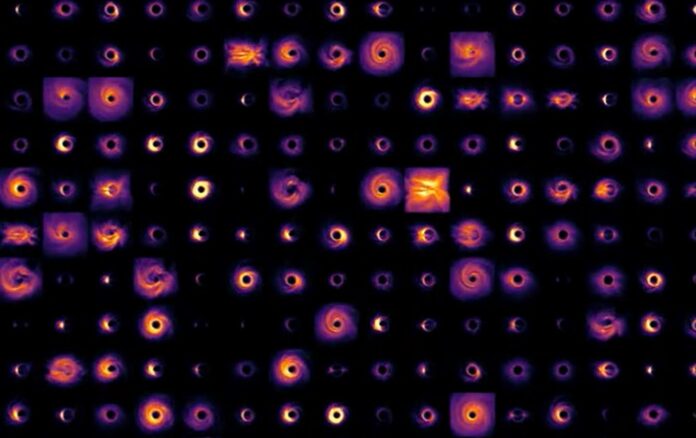Machine learning has enabled scientists to create a clearer image of the supermassive black hole situated at the heart of M87, often referred to as the “fuzzy, orange donut.”
The newly reconstructed image provides a sharper view of the central region, which is larger and darker, and is surrounded by bright accreting gas that resembles a “skinny donut.”
This is the first time that the full resolution of the array, obtained by the Event Horizon Telescope (EHT) collaboration in 2017, has been achieved.
In 2017, the EHT collaboration used a global network of seven pre-existing telescopes to collect data on M87, creating a “telescope the size of Earth.” The data, however, has gaps since it is not practicable to cover the whole surface of the Earth with telescopes, much like missing parts in a jigsaw puzzle.
“With our new machine learning technique, PRIMO, we were able to achieve the maximum resolution of the current array,” points out lead author Lia Medeiros.
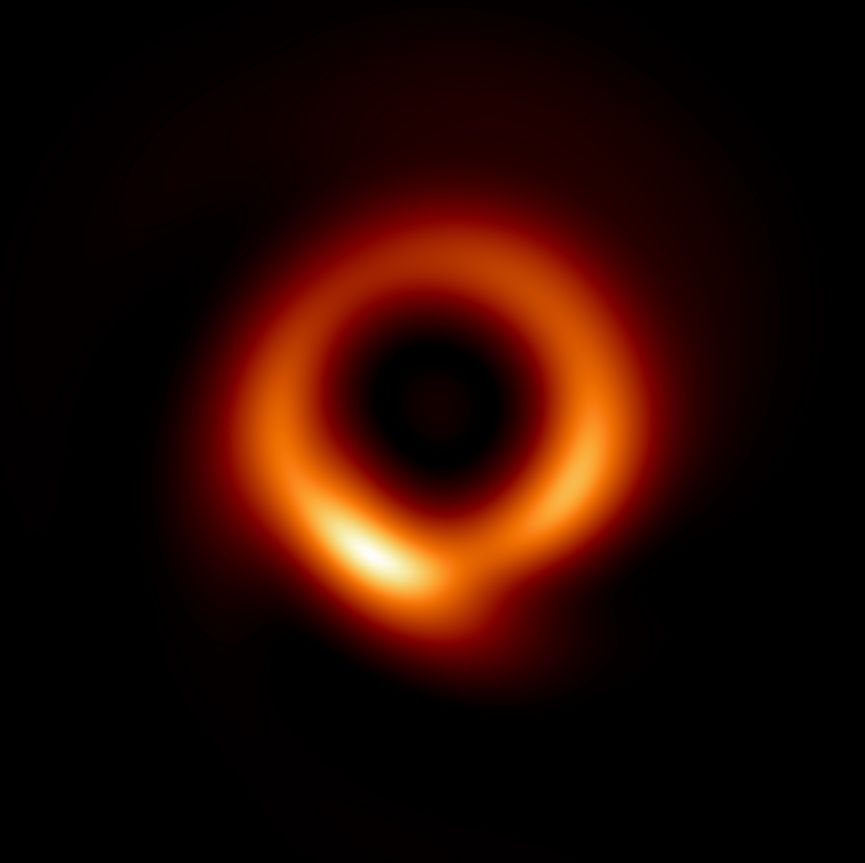
“Since we cannot study black holes up-close, the detail of an image plays a critical role in our ability to understand its behavior. The width of the ring in the image is now smaller by about a factor of two, which will be a powerful constraint for our theoretical models and tests of gravity.”
PRIMO, an acronym for principal-component interferometric modeling, was created by the EHT team, including Lia Medeiros from the Institute for Advanced Study, Dimitrios Psaltis and Feryal Özel from Georgia Tech, and Tod Lauer from NOIRLab.
The team’s work can now be found in The Astrophysical Journal Letters.
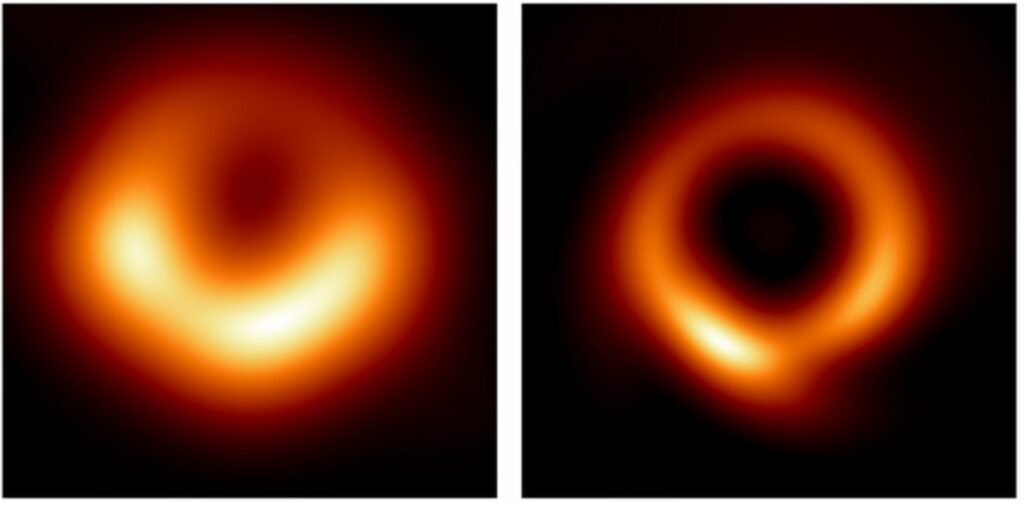
According to Lauer, PRIMO presents a new method to tackle the challenging task of constructing images from EHT observations. It compensates for the missing information about the observed object, which is necessary to generate an image similar to what would have been seen using a single colossal radio telescope the size of the Earth.
The PRIMO algorithm uses dictionary learning, a branch of machine learning that enables computers to generate rules based on vast sets of training data. For instance, with sufficient training, a computer can identify whether an unknown image is a banana or not, after being fed a series of diverse banana images. The versatility of machine learning has been demonstrated in numerous ways, from creating Renaissance-style artworks to finishing the unfinished works of Beethoven.
PRIMO employed computers to analyze over 30,000 high-fidelity simulated images of black holes accreting gas. The simulations’ assortment encompassed a broad range of models for how the black hole absorbs matter, aiming to identify common patterns in the images’ structure. The various structure patterns were sorted based on their frequency of occurrence in the simulations and were then blended to generate an incredibly accurate representation of the EHT observations. The algorithm simultaneously provided a high-fidelity estimation of the missing image structure.
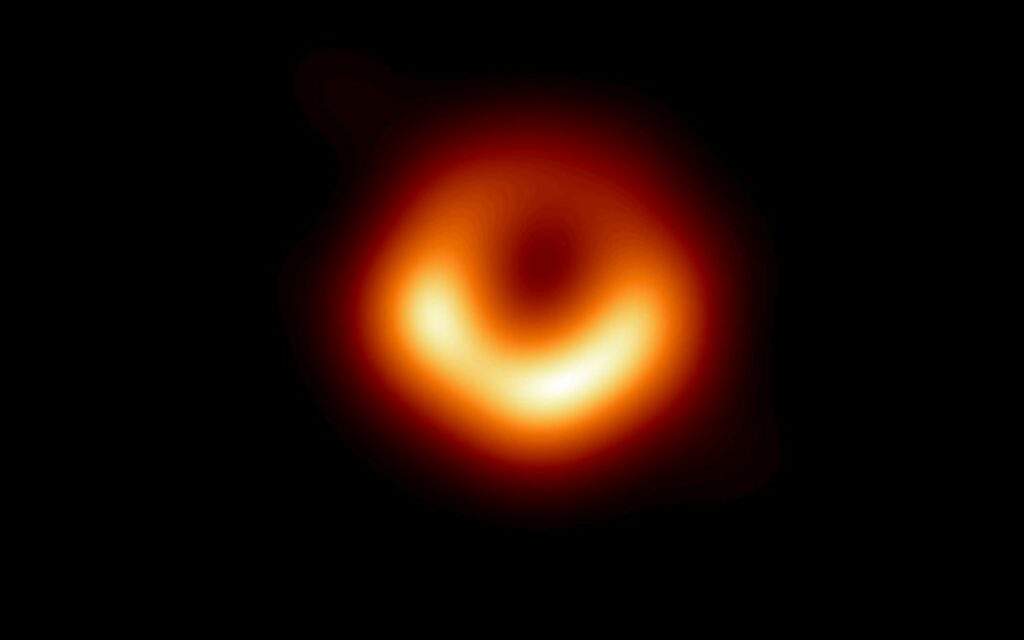
A paper that pertains to the algorithm was published in The Astrophysical Journal on February 3, 2023.
“We are using physics to fill in regions of missing data in a way that has never been done before by using machine learning,” adds Medeiros. “This could have important implications for interferometry, which plays a role in fields from exo-planets to medicine.”
After generating the new image, the team verified its consistency with the EHT data and theoretical expectations, such as the bright ring of emission that is anticipated to arise from the hot gas as it falls into the black hole. The image generation process involved making assumptions regarding the suitable form of the missing data, and PRIMO accomplished this by building on the previous discovery in 2019 that provided an accurate portrayal of the M87 black hole in its broad details.
The newly reconstructed image of the M87 black hole should enable scientists to more accurately determine its mass and the physical parameters responsible for its current appearance. The data also provides researchers with an opportunity to place more significant constraints on alternatives to the event horizon, based on the central brightness depression, and carry out more robust tests of gravity, based on the narrower ring size. Additionally, PRIMO can be applied to other EHT observations, including those of Sgr A*, the central black hole in our Milky Way galaxy.
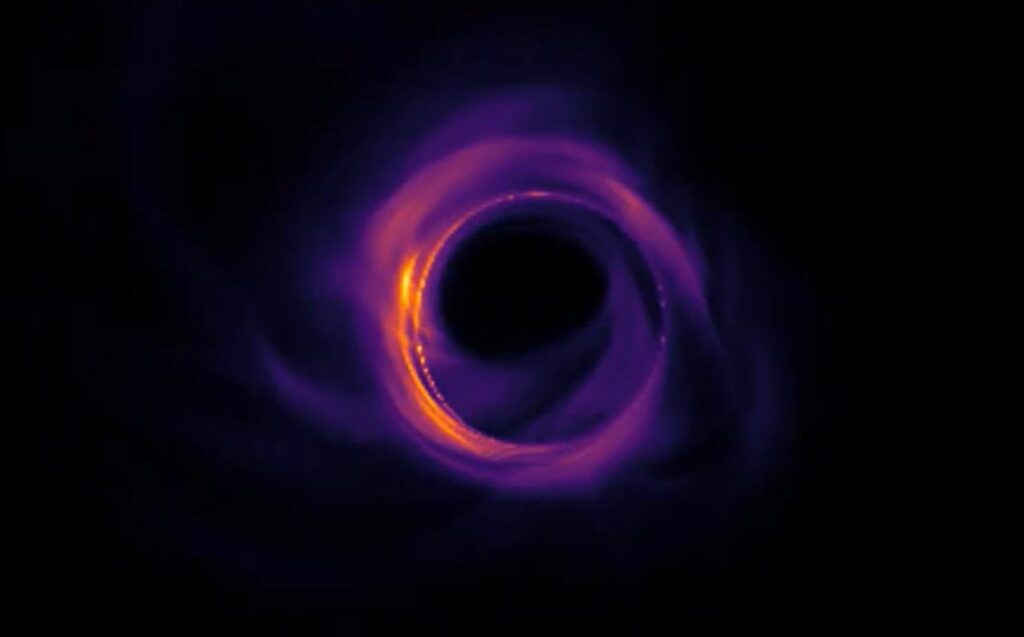
M87 is a massive galaxy situated relatively close to Earth in the Virgo cluster of galaxies. Over a century ago, astronomers detected a mysterious jet of hot plasma emanating from its center. In the 1950s, radio astronomy unveiled a compact, bright radio source at the galaxy’s center. In the 1960s, scientists suspected that a massive black hole powered this activity. Measurements taken from ground-based telescopes in the 1970s and later by the Hubble Space Telescope starting in the 1990s provided robust evidence that M87 harbors a black hole weighing several billion times the mass of the Sun. This conclusion was based on observations of high velocities of stars and gas orbiting its center. The EHT team obtained the M87 observations in 2017 over several days from different radio telescopes linked together simultaneously to achieve the highest resolution possible. The iconic “orange donut” image of the M87 black hole, released in 2019, represented the first attempt to generate an image from these observations.
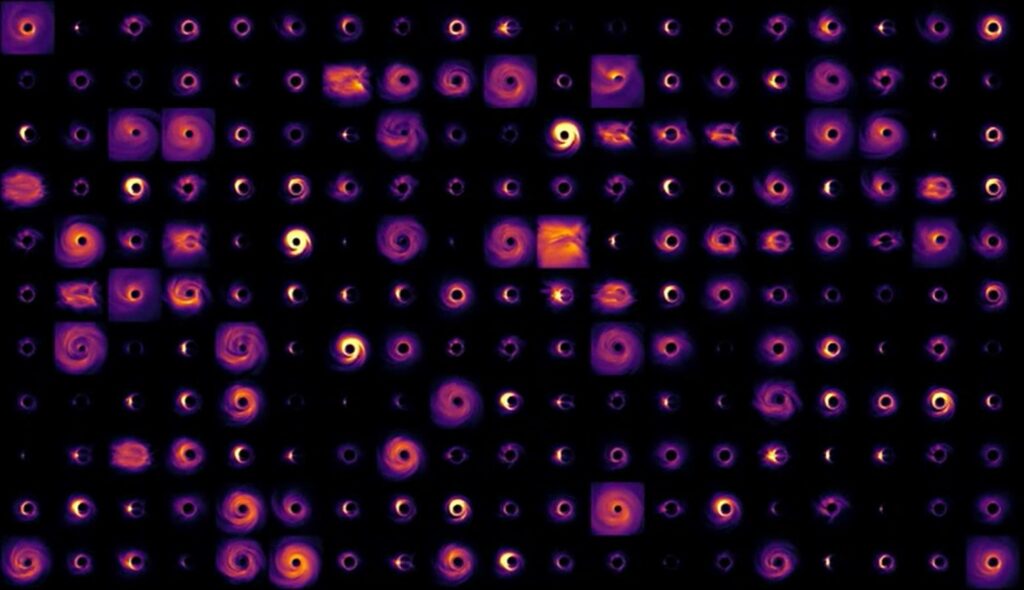
“The 2019 image was just the beginning,” adds Medeiros. “If a picture is worth a thousand words, the data underlying that image have many more stories to tell. PRIMO will continue to be a critical tool in extracting such insights.”
Source: 10.3847/2041-8213/acc32d
Image Credit: Medeiros et al. 2023
